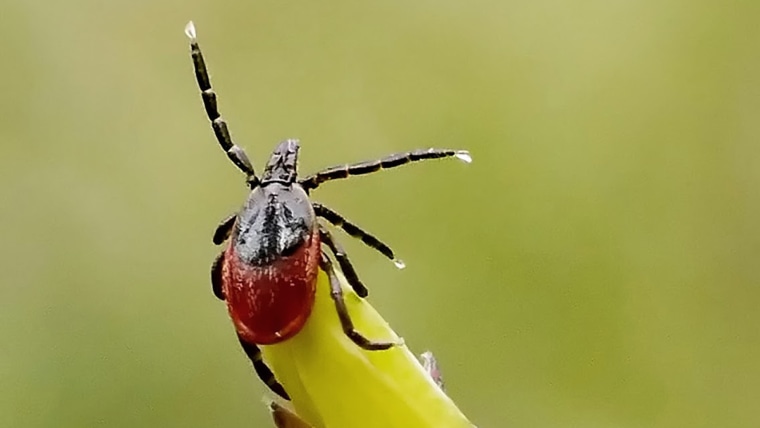If you think ticks die out in the winter, you’re in for a sad surprise. Ticks are apparently quite resilient and most manage to winter over just fine, hiding in decaying vegetation and waiting for a break in the weather to emerge. Any day when temperatures hit 40 degrees and above, ticks are back in motion, experts say.
So, if you’ve noticed a tick on your pet, it’s a warning sign for you to start checking yourself for the nasty little disease-spreading blood suckers. “If you’ve been on a hike with your dog and find a tick on him, then that should alert you to check yourself for ticks,” said Laura Goodman, an assistant research professor at the Cornell University College of Veterinary Medicine. “And you should get someone else to help you do the exam.”
Already, veterinarians in Michigan are reporting a surge in tick bites in dogs.
Goodman suggested wearing white if you’re walking where you think there might be ticks because they’ll be easier to spot crawling around on your clothing. “Pull your socks up over your pants,” she says. “And certainly use repellents that say they are indicated for ticks. When you get home, put your clothes straight into the dryer to kill the ticks.”
While there are dozens of types of ticks, the biggest concern is with deer ticks, which could carry diseases like Lyme. Though the majority of Lyme cases occur in the spring when people are bitten by deer ticks in their tiny nymph phase, that doesn’t mean you can’t pick up the disease at other times of the year, said Maria Diuk-Wasser, an associate professor in the department of ecology, evolution and environmental biology at Columbia University.
Do ticks die in the winter?
In the winter and early spring, you’d be finding adult ticks, Diuk-Wasser said. The good news is adult deer ticks are far easier to spot than nymphs because they’re a lot bigger, she added. The bad news: While some 25 percent of nymph-phase deer ticks carry Lyme disease, in adult ticks it’s about 50 percent. So, while you’re less likely to come across a deer tick in the winter, it’s more likely to make you sick if you’re bitten.
“It used to be that we didn’t expect to come across ticks in the dead of winter,” Diuk-Wasser said. “But the last couple of winters have been pretty mild, so that is the situation where you can definitely get Lyme.”
It’s probably going to get worse before it gets better, experts said. “Because of climate change, it’s getting worse,” said Dr. Meryl Littman, a professor emerita of medicine at the University of Pennsylvania School of Veterinary Medicine. “And the habitats are spreading, mostly because migratory birds are bringing ticks to new areas where they are thriving.”
There’s no question deer tick nymphs are showing up earlier and earlier, Diuk-Wasser said. “We don’t know if that means we’re having a longer season overall or whether it’s just starting earlier,” she says. “In the last 25 years, the peak has moved. It used to be in June and now it’s in mid-May and you can see the nymphs even in April.”
Currently, no one knows how many people are getting bitten and infected in the winter, Diuk-Wasser said. She’s hoping those kinds of stats will come out of research from the Northeast Regional Center for Excellence in Vector-Borne Diseases.
"Ticks can be found year round, depending on the weather," Diuk-Wasser said. "If it's a warm winter day and you're walking in an area that ticks like, such as a brushy spot or an area with leaf litter, you're more likely to run into them."
